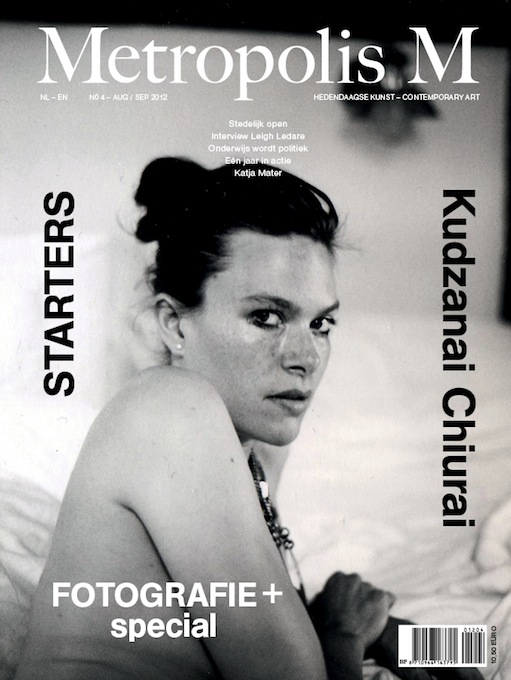Luc Delahaye
Luc Delahaye
Beautiful Gruesome Death
Is it acceptable to just lean over someone who is in danger of losing their life and take their picture? After years of working as a war photographer, Luc Delahaye is investigating this issue in work within the context of art. His efforts are generating the requisite lack of understanding.Having earned his reputation as a war photographer for Magnum and Newsweek, the Frenchman Luc Delahaye (b. 1962) is now focusing on the art world. His panoramic and imposing war zone photographs are often disturbing and unreal. On the one hand, they are clearly documentary. On the other, the artist is decidedly composing images. Delahaye is testing the boundaries between art and reporting, between fiction and reality.In 2003, in an interview with Artnet, Delahaye stated that his ambition was ‘to be as neutral as possible, to record as much as possible, and to let the image revert back to the mystery of reality’. It was a plea for an objective form of photography, because ‘if I force myself too much, if I look for a certain effect, I risk missing the photograph’. This kind of neutrality is problematic. A work of art cannot exist without the personal signature or some intervention in content on the part of the artist. Even the decision to take his photographs from a panoramic, frontal perspective is a stylistic choice.With his ambition for neutrality, Delahaye is repeating the problem of the realism of the late 19th century, a quest to achieve a ‘styleless style’ that would represent reality only as it truly is. Because of their large dimensions and keen sense of detail (strongly reinforced by the digital, wide-angle camera he uses), Delahaye’s images have more than coincidental echoes of the way in which Gustave Courbet and other realists adopted the massive formats of historic painting in order to paint images of contemporary reality. Delahaye’s famous photograph of a dead (or sleeping?) Taliban fighter lying by a roadside, for example, by eliminating the horizon and filling the image with earth colours and a few clumps of grass against which the fighter’s clothing is sharply contrasted, unmistakably has the smell, and most of all the massive earthiness, of Courbet.Delahaye wants to raise several ethical issues in his work, most notably the question of whether it ‘is acceptable to lean over someone who is dying and take their picture’. The problem with this is that the photographs themselves offer no answer at all. Carrying out the morally problematic action, however, solely for the purpose of asking that question, is certainly a dubious tactic. Both morally and artistically, introducing such reflections before setting out into a war zone armed with a wide-angle lens would be a far more honest approach.This is where the weakness of Delahaye’s photography is exposed. One cannot deny the visual power of his photographs, but their meaning is in doubt. One has to question whether they say and do what the artist wants them to. Because of their highly aesthetic character, the moral issue connected with these photographs comes up doubly short: they seem hypocritical in light of their aesthetics. At the same time, the moral issue teaches us nothing about the photographs as aesthetic objects. If it is morality that Delahaye is concerned with, there is no intrinsic need to produce either beautiful or panoramic photographs. Form and content wrench, but not in a productive way. The debate that Delahaye has woven around his work consequently seems primarily intended to avoid broaching a number of difficult questions, such as whether photojournalism can or should be art, or the question of whether an aesthetic discourse around photojournalism as art does not ultimately undermine the journalistic value of the photography and lead to a cynical aestheticism in how we deal with gruesome reality, amongst other things because that gruesomeness is at the same time the reason for putting the aesthetic skills of the photographer on display. What is the morality of a photographer who calls himself an artist when he does it at the expense of suffering in the world? Here lies a crucial difference from the historic realism of Courbet, for example, because the suffering figures in Courbet’s paintings are a representation of a painful reality. In order to do its work, Luc Delahaye’s photography requires real suffering, directly in front of the camera lens. The fact that Delahaye’s work has made the step into the art gallery, that its morally problematic character is itself allowed to determine its artistic weight (it is art because it evokes moral questions, but it evokes those questions because it essentially does something immoral), primarily reveals how, in its postmodernist relativism, the contemporary art world is no longer capable of keeping its own categories clear. Legitimizing Delahaye’s work by moralizing its aesthetics takes the edge out of the moral and leaves a rather bad taste behind, because both Delahaye and the art gallery must first commit the transgression (by taking and exhibiting the photographs) before thematizing it. This is a decidedly controversial circularity, one that no doubt sells photographs, but that must itself be thoroughly and fundamentally brought into discussion. Christophe Van Eecke is a critic and philosopher based in Maastricht
Christophe Van Eecke
























